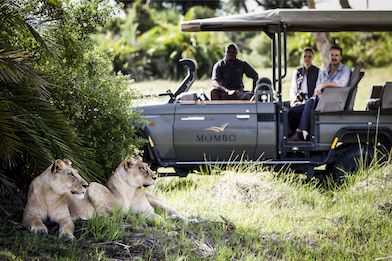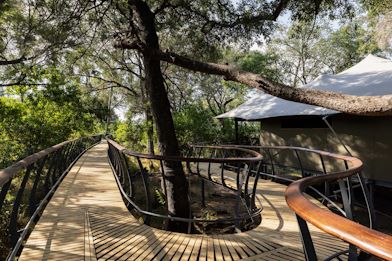Reporting from our new site in Rwanda’s beautiful Akagera National Park, we could not be more excited for what 2019 has in store. The progress of the Magashi build has been amazing, and makes us confident about what lies ahead. The team on site is strong, motivated and eager to complete the camp in time for the arrival of our first guests mid-year.
Since their arrival in November last year, Adriaan and Hein, Magashi’s senior guides, have been exploring the area, and we are very impressed with the results. Game is plentiful, and sightings of predators and lots of other interesting game have been off the charts. Recently Trevor and Dorence, from the SATC Tracker Academy, joined them, which means that chances of seeing game will improve even more thanks to their expert tracking skills!
To sum up: Magashi is ready for 2019 and we are 100% sure that once open it will steal the hearts of all our visitors!
A short history of Akagera National Park
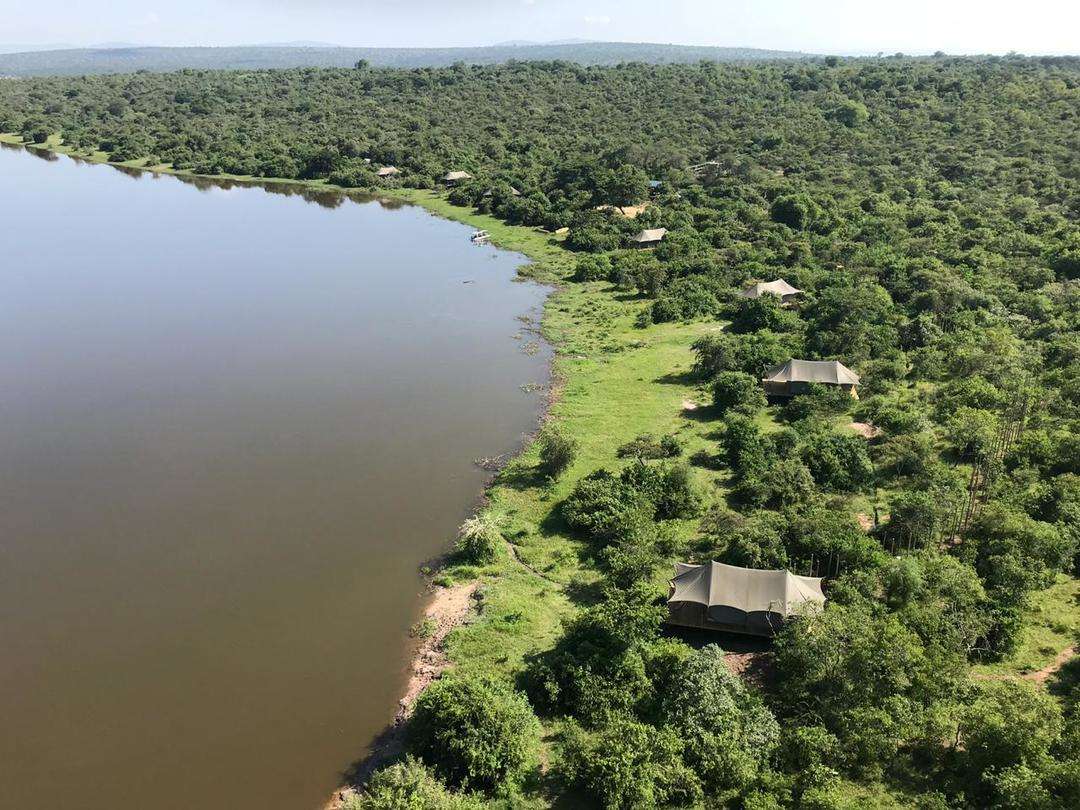
Magashi aerial. Image by Chris Roche
Magashi is set in a private concession on the Magashi Peninsula, along the shores of Lake Rwanyakazinga in the north of Akagera National Park. It is a land where savannah and wetland meet, creating a diverse environment for many animals.
In 1934, the Belgian government’s conservation programme created a new national park in northeastern Rwanda called Le Parc National d’ Akagera.
At independence in 1962, the management of Rwanda’s national parks and wildlife reserves was taken over by the Rwandan Ministry of Agriculture, Water and Forestry. The Rwandan ministry struggled to maintain Akagera to the same standards as the Belgian team it superseded. The department suffered due to lack of trained personnel, insufficient equipment, and a budget that was practically nonexistent.
During the late ‘60s and early ‘70s the work of Dian Fossey in Volcanoes National Park began to gain exposure on an international scale, which increased the motivation for promoting Rwanda’s tourism and wildlife. Experts in science, tourism, conservation and construction established a strong organisation called Rwandan Office of Tourism and National Parks (ORTPN) that worked to support Rwanda’s protected land. This new Office implemented conservation methods such as training guides to enhance tourism, hiring motivated guards to reduce poaching and organising patrols.

Historical elephant translocation. Image: Jacky Babilon
1975 was a landmark year for Akagera as 26 small elephants were successfully translocated from Rwanda’s Central Southern region to Akagera National Park. This time is considered a period of abundance for the fauna of Akagera. Thousands of buffalo, zebra, topi and impala flourished in the savannah. During this time, the lion population was estimated to be between 250 and 300 individuals.
Unfortunately soon after the elephant translocation in 1975, Akagera, and indeed, the whole of Africa, was overwhelmed by acts of organised poaching. In Akagera, the rhino population was almost completely wiped out. They were very rarely seen and the last confirmed rhino sighting in Akagera was in 2007.
In 1997, the park was downsized by two thirds due to land pressure from returning refugees after the Rwandan genocide. Due to population pressure the human-wildlife conflict increased to the extent that the lion population was wiped out, mostly due to poisoning by cattle farmers. The last lions roaming Akagera were seen in 1999.

Historical lion in Akagera. Image: Hubert Verhulst
In 2009, African Parks partnered with the Rwanda Development Board (RDB) to create the Akagera Management Company (AMC), the entity responsible for the day-to-day management of the park. The Rwandan Government prioritised the restoration of Akagera as a key development initiative for the country.
Through the involvement of African Parks and AMC management, Akagera has undergone an incredible transformation in the last years, where poaching has essentially been eliminated and wildlife is now thriving. African Parks reintroduced lions in 2015 and reintroduced the black rhinoceros in 2017.
In partnership with the Rwanda Development Board and African Parks, and with long-term funding support from The Howard G. Buffett Foundation, Wilderness Safaris is developing Magashi.
Arrival of the Tracker Academy

The Tracker Academy and Magashi Guides. Image: Rob Baas
SACT Tracker Academy is a non-profit organisation in South Africa which trains people from disadvantaged backgrounds in the traditional skills of tracking. Successful tracking requires the combination of experience, knowledge and patience. A talented tracker must employ physical endurance and mental focus in often difficult environmental conditions over extended periods. Well-trained and knowledgeable trackers can help with environmental restoration, animal monitoring and habituation, specialised safaris, education and wildlife protection.
We are very excited that the SACT Tracker Academy has committed to base two of their trackers, Trevor Makukule and Dorence Khoza, at Magashi from December onwards. The trackers will focus on the habituation and identification of leopards in our concession. This will enhance the guests’ experience, and chances of seeing leopard. In turn, guests can contribute to research and data capturing, which will further improve leopard monitoring.
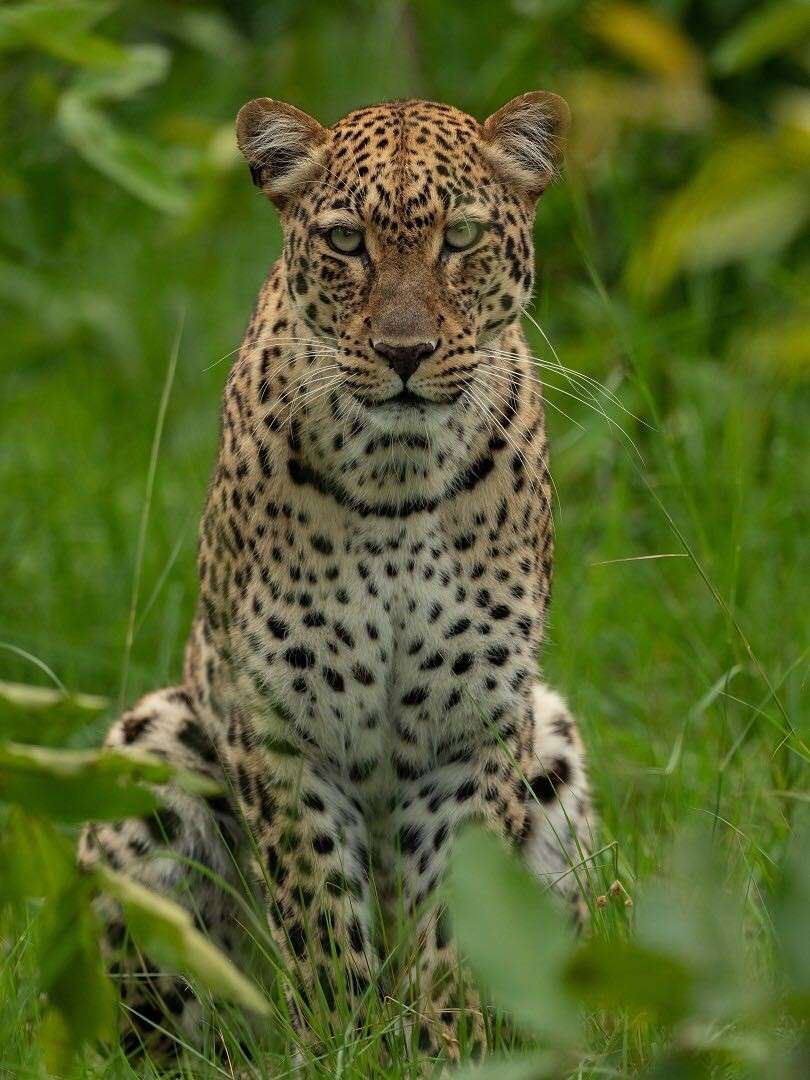
Image: Adriaan Mulder
Alex van den Heever, co-founder of the Tracker Academy, and Renais Mhlongo, trainer at the Tracker Academy, joined Trevor and Dorence for the first few days and assisted them with settling in and getting started. Trevor and Dorence are now at home at Magashi and are enjoying exploring the area and, of course, finding leopards! Together with Hein and Adriaan, senior guides at Magashi, they make a great team.
Most exciting is that the Tracker Academy has also committed to transferring their skills to the Rwandan people – a golden opportunity for Rwandan bush lovers!

Image: Adriaan Mulder
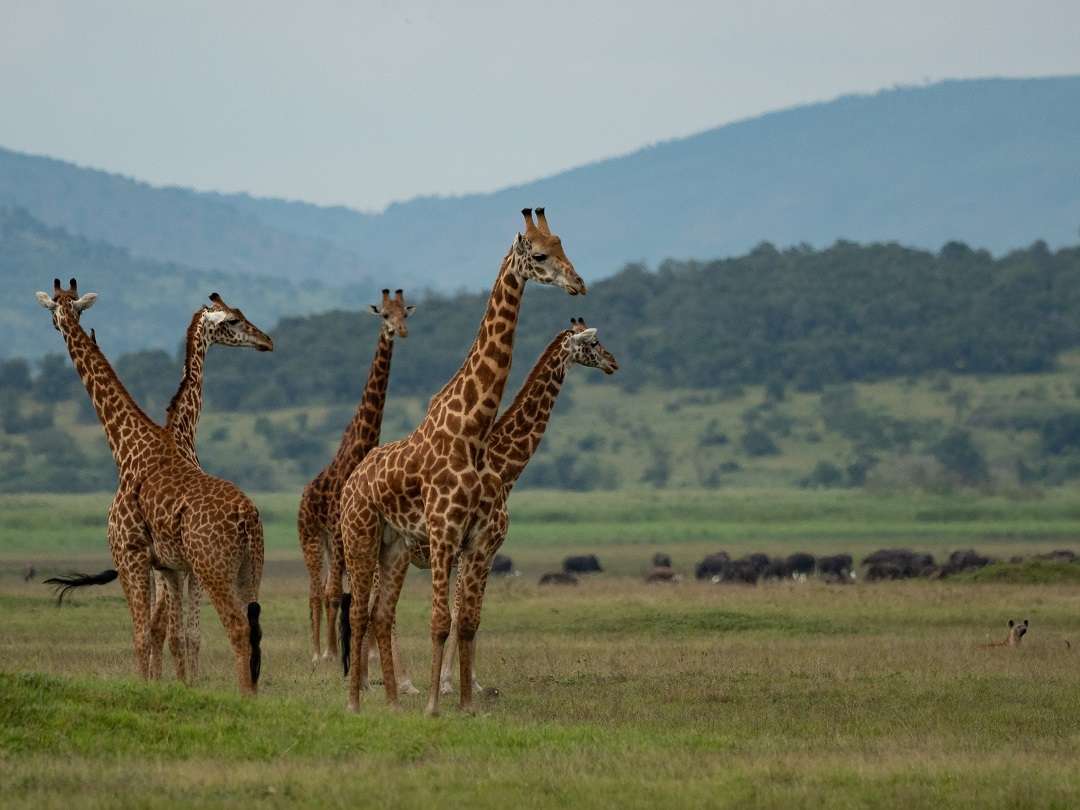
Giraffe, buffalo and hyaena. Image: Adriaan Mulder
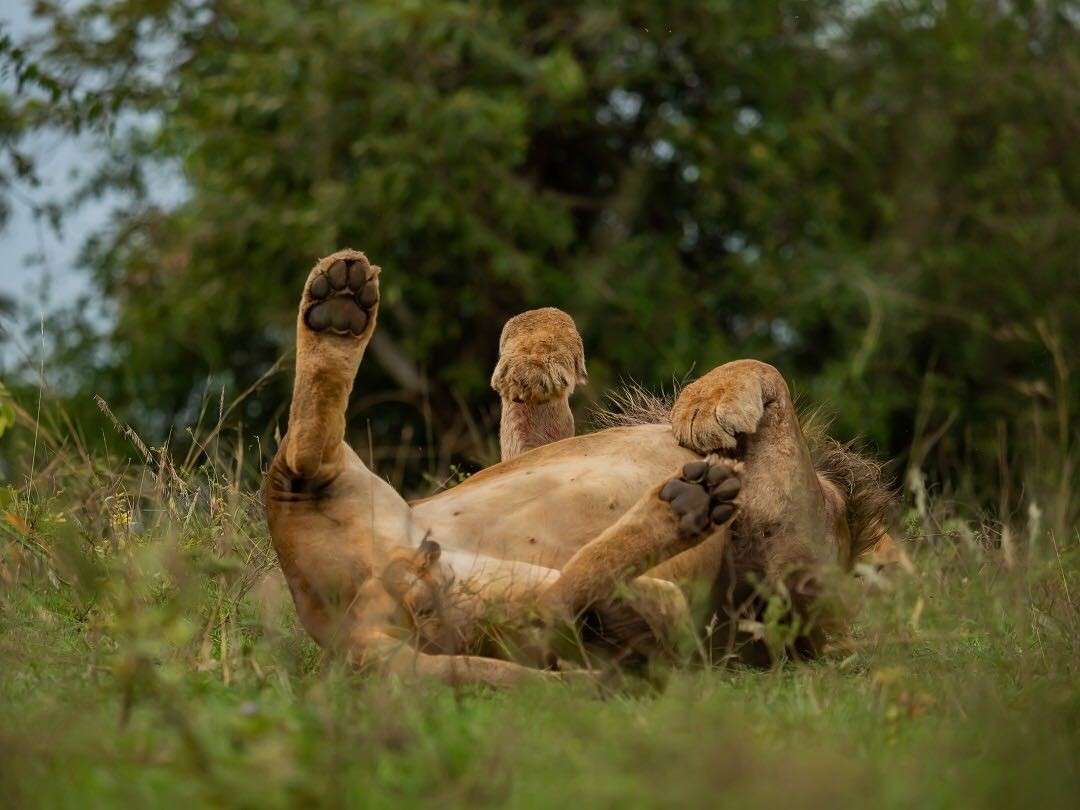
Lazy lion. Image: Adriaan Mulder
Building progress

Image by Chris Roche
The building team has done a remarkable job. Not only do they work fast, everything is neat and executed with precision. Over the last month, amazing progress has been made and we can now see the layout of the camp and start to imagine how beautiful it will be when it is finished.
A team from Zimbabwe and South Africa is working together with our local team from Akayange village just outside the park. Their employment is helping support their families back home – see the picture below showing a few members of the team.
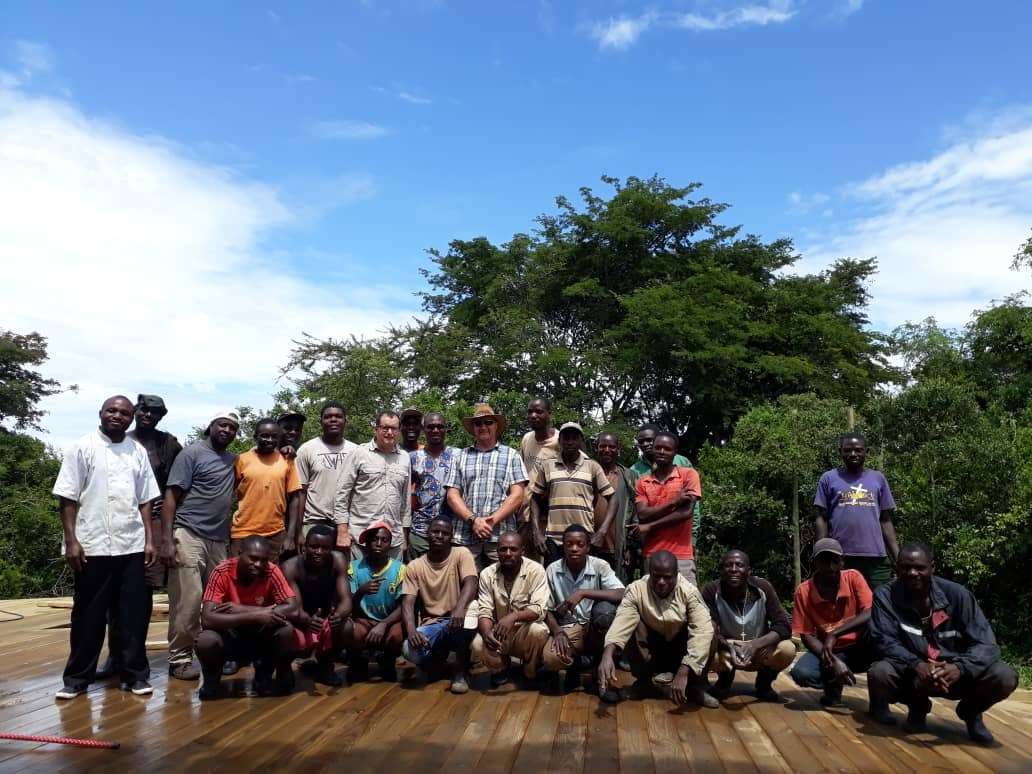
Construction team. Image: Christo Potgieter
Since most of the workers will take a short break over Christmas, the construction has stopped and one of the teams will stay behind to look after the camp. In the New Year, the building team will return and continue with the boardwalks and tent interiors.
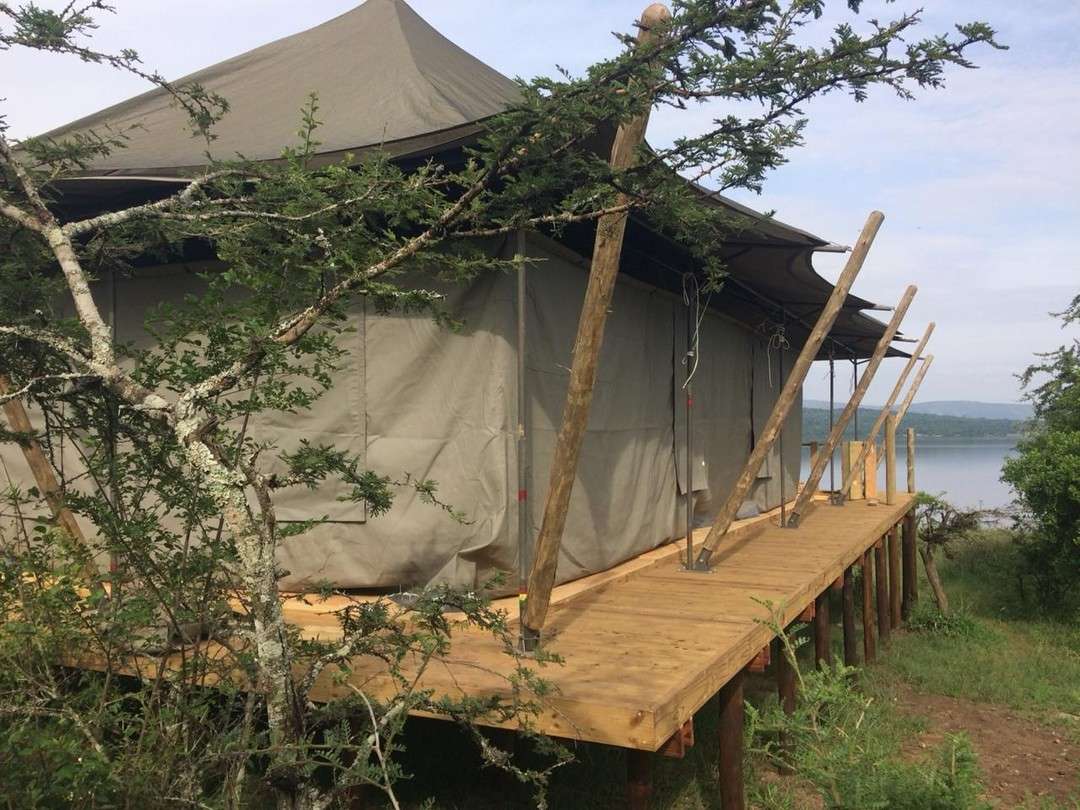
Guest tent. Image: Christo Potgieter
We would like to take this opportunity to thank the construction team for their hard work during 2018, and wish them a well-deserved break and happy return in 2019!
Solar energy and freedom from single-use plastic and paper!
Magashi will run on 100% solar energy, with a backup generator for rainy days. In addition, we would like Magashi to be as eco-friendly as possible, with minimal impact on the environment. We are therefore banning single-use plastic from the lodge, in keeping with Rwanda’s strict anti-plastic policy implemented in 2008, when plastic bags were banned and replaced by recycled paper bags.

Beeswax wraps
Also, instead of cling wrap we will use Kitenge beeswax wraps, and replace straws with bamboo alternatives. Reusable containers and water bottles will be provided for snacks and drinks during game drives. We will also replace print brochures and other guest information in our rooms with digital information on a tablet.
Wildlife sightings
The sightings at Magashi and further afield in Akagera have been amazing. Although we expected them to be good, they have surpassed everything we hoped for.
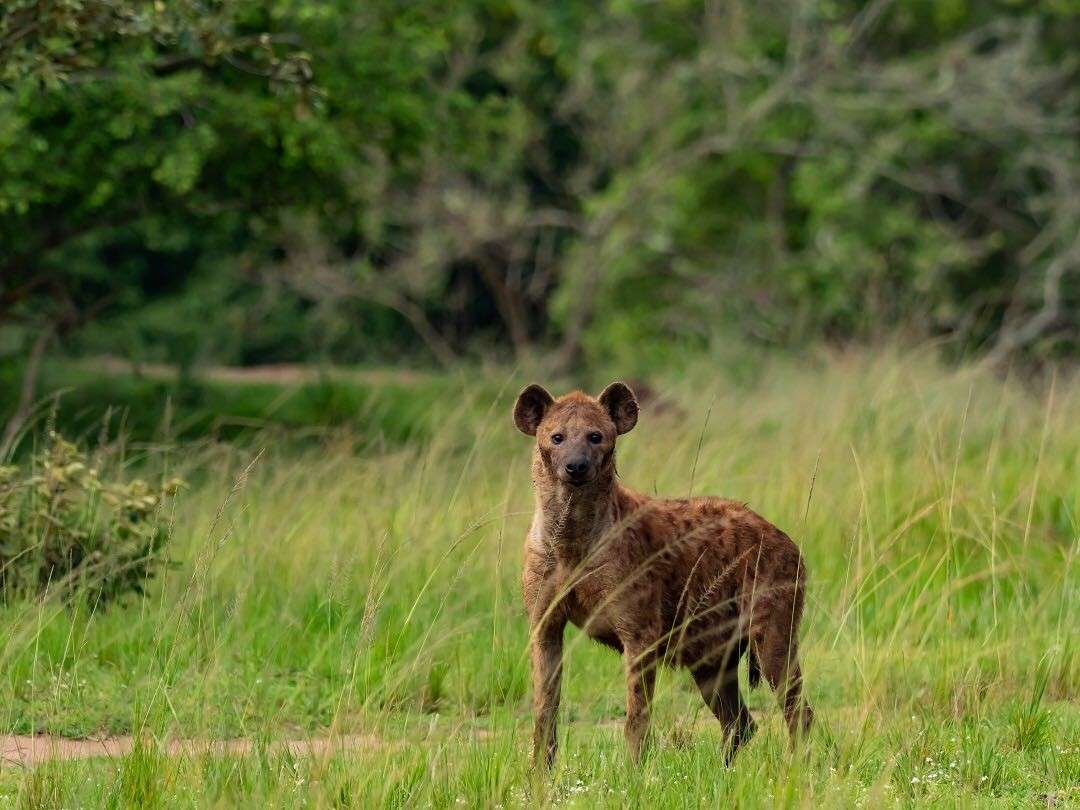
Image: Adriaan Mulder
There are big herds of plains game, buffalo and elephant, and plenty of predators like lion and hyaena, but especially leopard. The guides and trackers see leopards by day, by night, in trees, on the road, in the bush, and even under the main area deck at Magashi!
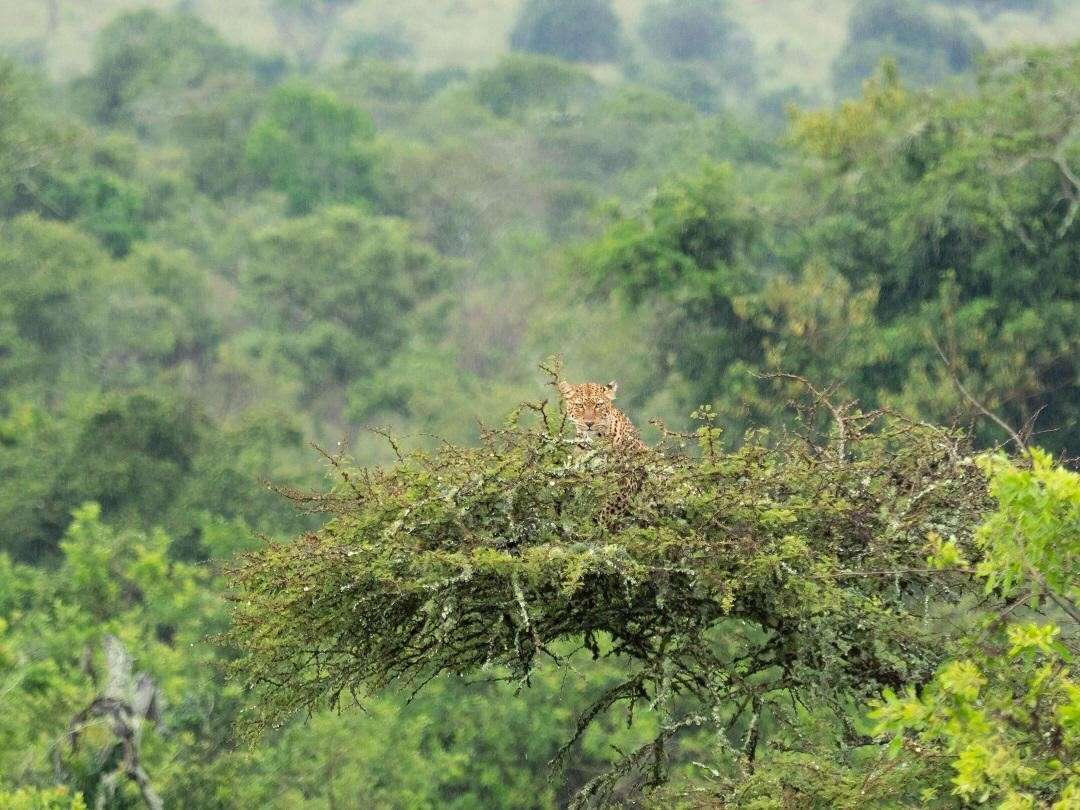
Leopard in the treetops. Image: Hein Myers

Image: Adriaan Mulder
On his way from the south of Akagera to Magashi, Adriaan was stopped by a herd of elephant in the pouring rain. They blocked the road so he was forced to sit, watch and enjoy them. Just a little later he saw a Verreaux’s eagle-owl seeming not to mind the rain. Adriaan continued and on a large open plain he found over 20 giraffe, roaming out in the open. In the background a large herd of buffalo mixed with some topi making their way to the marsh for a drink. Already an incredible spectacle, six hyaenas then came out and started to harass the giraffe. Talk about a productive rainy day!
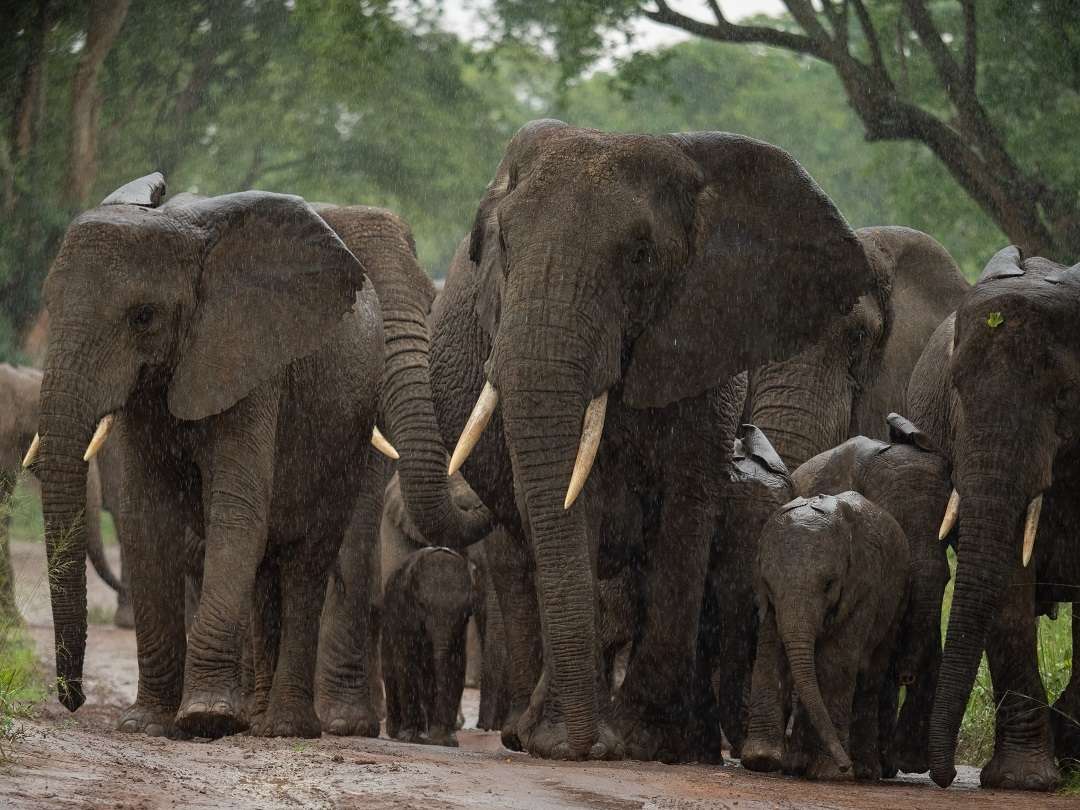
Elephants in the rain. Image: Adriaan Mulder
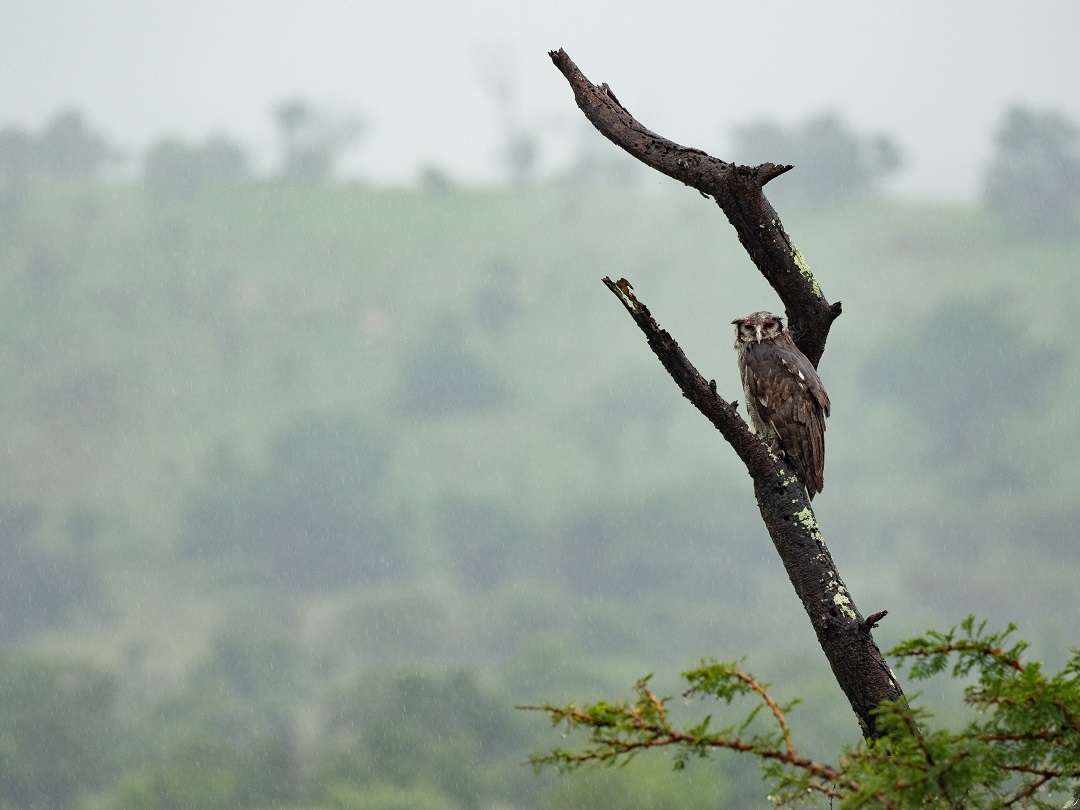
Verreaux’s eagle-owl seeming not to mind the rain. Image: Adriaan Mulder
The birdlife in Akagera is spectacular with more than 520 recorded species, including black-headed gonoleks, long-crested eagles and grey-crowned cranes, to name just a few. The rare shoebill stork has been hard to find, but Hein and Adriaan are not giving up and will continue the search! With the boats in the water and ready to be used, we are hoping that they will find this rarity in its preferred habitat.
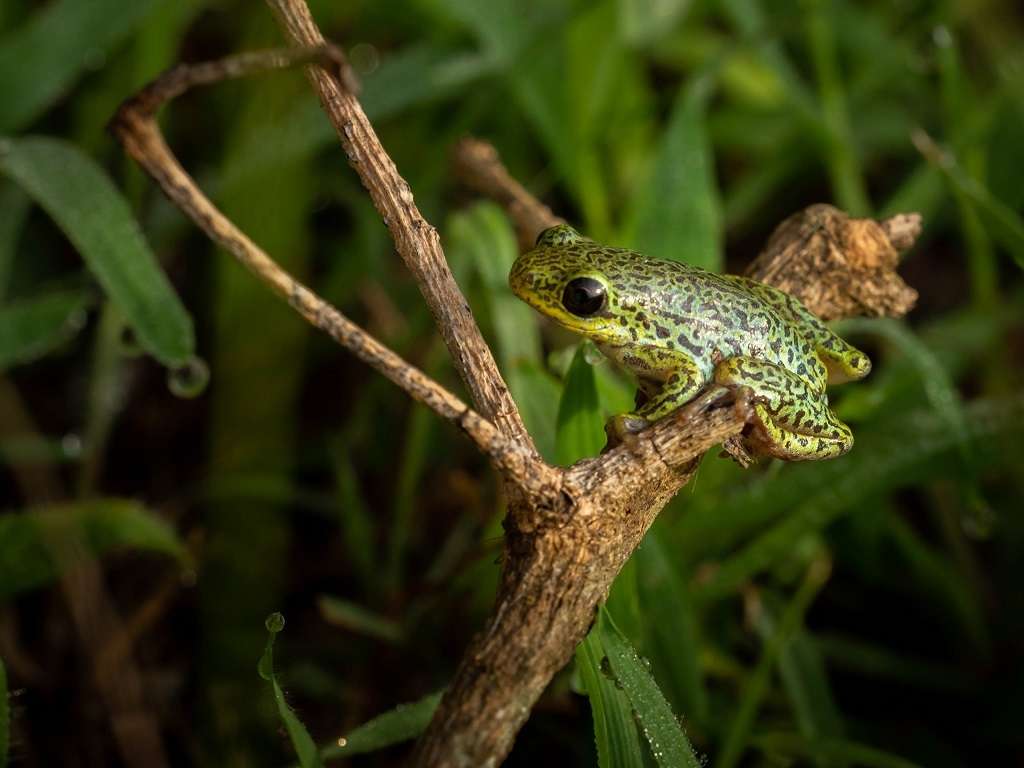
Common reed frog (Hyperolius viridiflavus). Image: Hein Myers
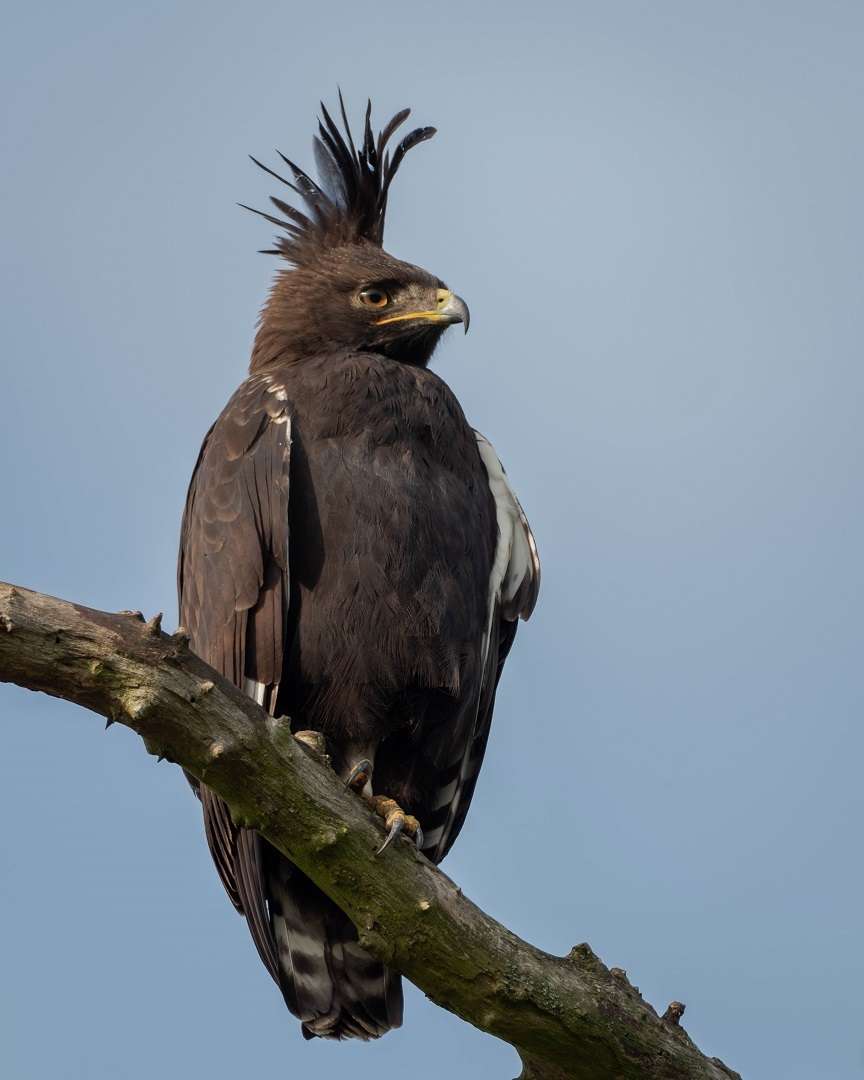
Long-crested eagle. Image: Hein Myers
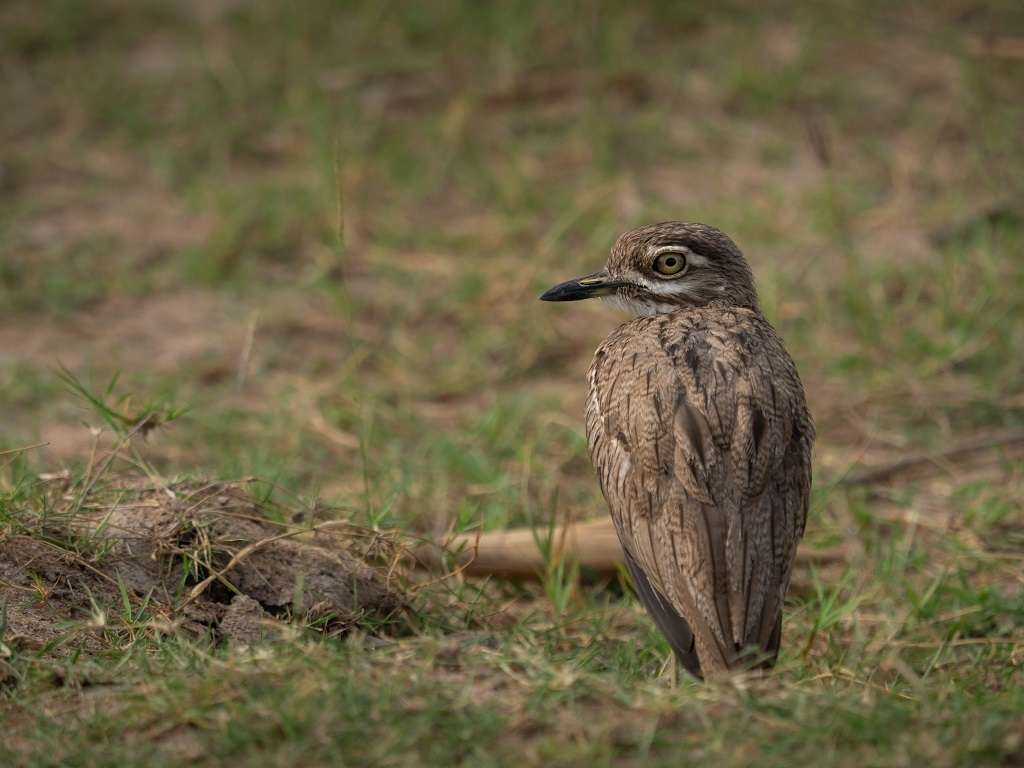
Water thick-knee. Image: Hein Myers
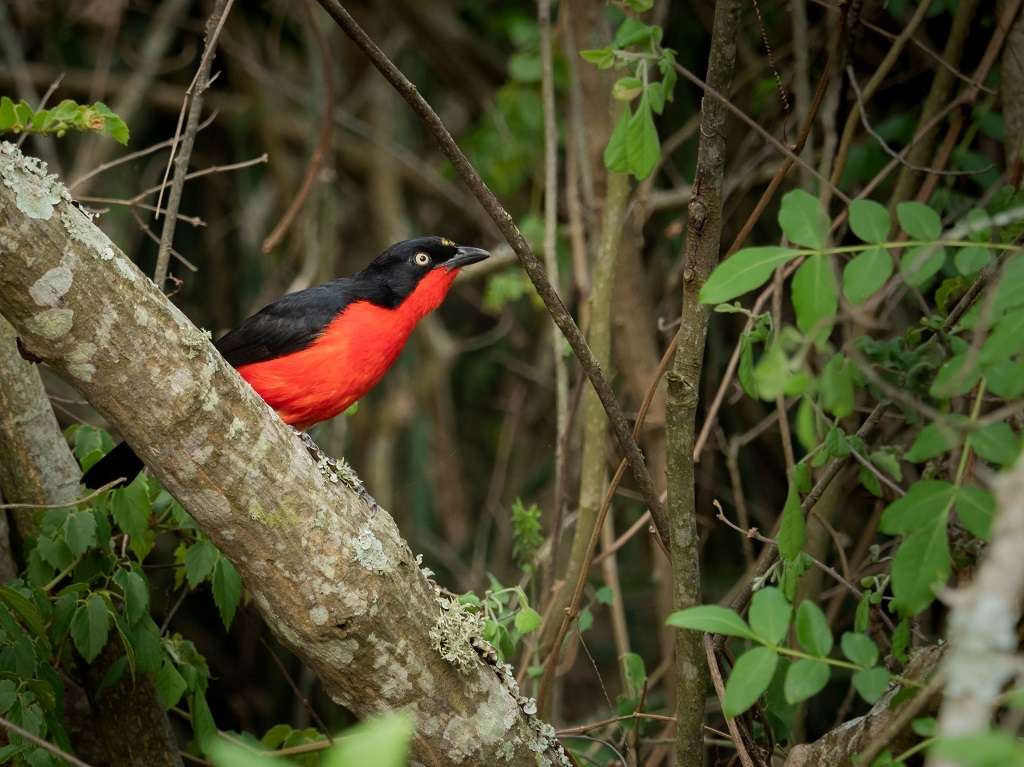
Black-headed gonolek. Image: Hein Myers
Season’s Greetings and Best Wishes for a Happy New Year
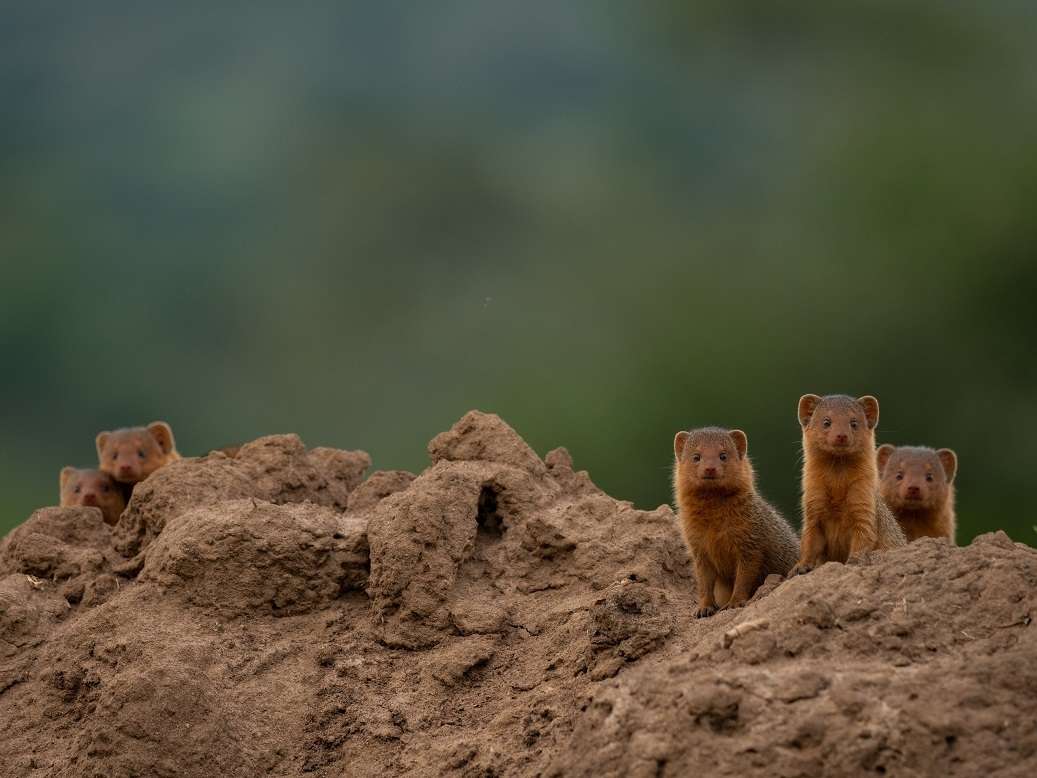
Dwarf mongoose. Image: Adriaan Mulder
After reading this, I am sure you can imagine how excited we are for 2019 and for our first guests to arrive. We’d like to wish all our Wilderness family and friends a beautiful start to the new year.


